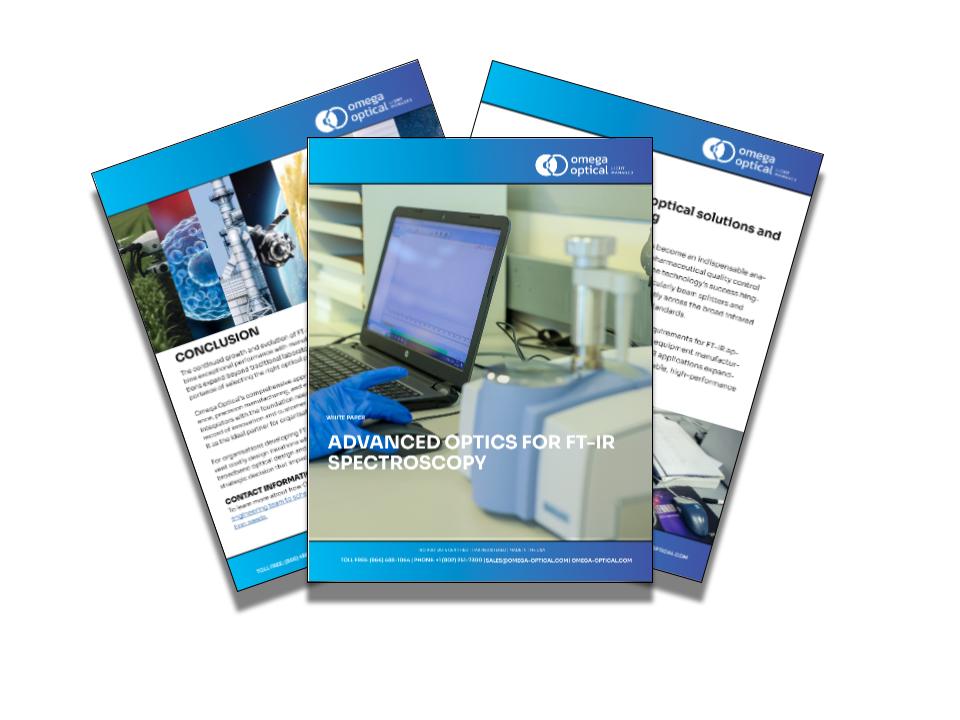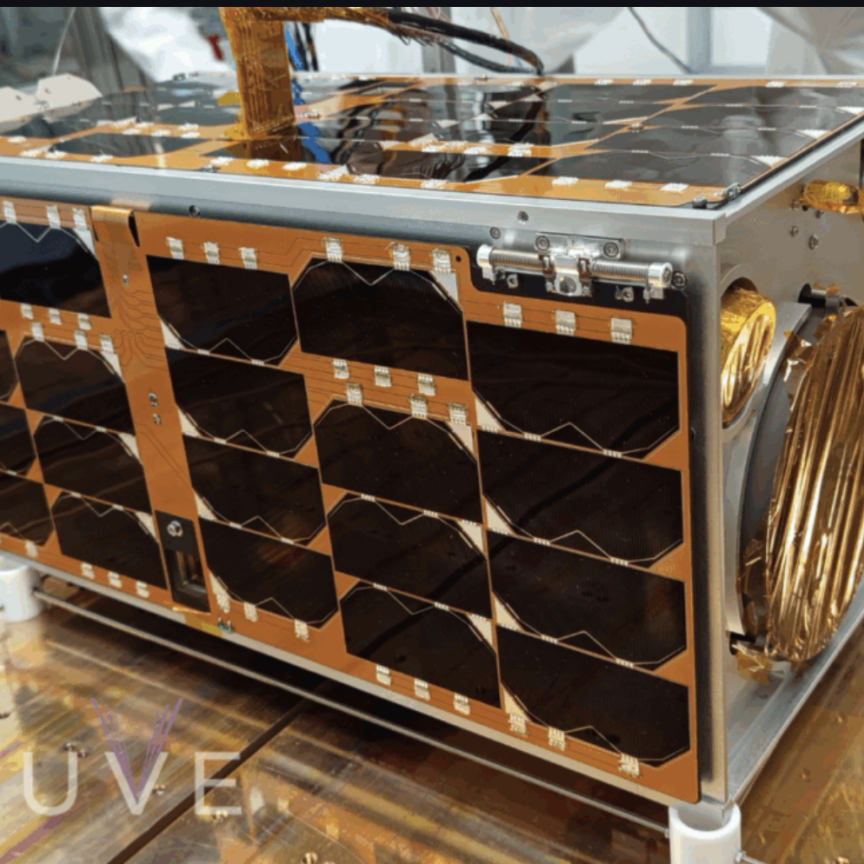Fourier Transform Infrared (FT-IR) spectroscopy is moving from the lab bench to the field, experiencing a transformation driven by advances in precision optical manufacturing and a push towards accessible instrumentation. What was once the exclusive domain of major instrument manufacturers is becoming increasingly available to application scientists, thanks to sophisticated optical components and collaborative development initiatives that are removing more traditional barriers to innovation.
At the heart of this evolution lies a challenge: creating optical components that can perform consistently across the broad infrared spectrum whilst remaining accessible to researchers who need the data, not the headache of building instruments from scratch.
The core optical challenge: consistent broadband performance
Every FT-IR system depends on a critical component that seems simple but represents decades of manufacturing refinement: the beam splitter. These optical elements must deliver consistent performance across wavelengths spanning from 2 to 25 micrometres or beyond, essentially covering the entire infrared spectrum.
"The broadband nature of the infrared spectrum required for FT-IR is very broad," explains Tim Olsen, Chief Technology Officer at Omega Optical, which manufactures 95% of the world's potassium bromide beam splitters for FT-IR applications. "The coatings are key because you need the coatings for that broadband delivery of light across that wide band."
This creates a fundamental trade-off in optical design. As Christopher Harrower, Process Engineering Manager at Omega Optical says: "You can do the whole band badly, or you can do a small band very well, or a mid band fairly well. It's really how much quality you want versus bandwidth."
For most analytical applications, the versatility of broadband coverage takes precedence, but this comes with performance compromises that demand sophisticated coating technologies to minimise.
Efficiency:the R×T metric and the fight for every photon
FT-IR system performance hinges on beam splitting efficiency, measured through what the industry calls the R×T (reflectance × transmittance) calculation. This metric quantifies how effectively the beam splitter divides incoming light between the two interferometer arms.
"R times T equals 25 is perfect 50:50," Harrower explains. "If you get some absorption and transmission goes down to 40:50 times 40, that's 20. So your performance drops really dramatically, even if you're at a different split like 70:30, that's R times T of 21."
These variations might seem small on paper, but they translate into significant analytical performance differences. In applications where researchers are "fighting for every photon," as Olsen puts it, these efficiency losses matter enormously.
KBr and the humidity challenge: material trade-offs
Potassium bromide (KBr) remains the gold standard for broadband FT-IR applications due to its excellent transmission characteristics across the infrared spectrum. However, it comes with a significant caveat that shapes how and where it can be used.
"Salt optics are susceptible to humidity," notes Harrower. "We have coatings to help out with humidity degradation, or fogging as we call it, but that just helps to prevent it. It doesn't prevent total degradation."
This limitation has driven interesting material adaptations across different applications. Olsen explains the trade-offs: "If you're going into a narrow range, you can have the benefit of not having to worry about humidity. So if you're going into an oil rig, you're not going to get away from water vapour, so then you have to go to zinc selenide beam splitters."
One customer using KBr-based systems for milk analysis in India faced particular challenges. "Even with the protective coatings, they degrade over time in high humidity," Olsen notes. "These optics can last 25-30 years in controlled environments, but put them in water and they're not going to last."
Precision assembly and the "soft" optics hurdle
Creating sub-assemblies for FT-IR systems involves more than just making individual components. Modern systems require precisely matched beam splitter and compensator pairs that work together to maintain interferometric performance.
"The most critical thing is assembling it without warping the optics," Harrower emphasises. "KBr is very soft, so if you mount it incorrectly, you're going to warp the optics and degrade the performance."
This manufacturing complexity has created significant barriers to entry in the market. Olsen says: "We were drafted into this consortium because the members had spent two and a half years trying to develop their own FT-IR beam splitter and failed. They eventually succumbed, and if you see our presentation now, it says 'leave the beam splitters to the professionals.'"
The scale of Omega Optical's operations reflects this specialisation: the company manufactures more than 40,000 potassium bromide optics annually, whilst their nearest competitor produces fewer than 100.
Open-source FT-IR: the democratisation movement
Perhaps the most significant development in the FT-IR market is the push towards open-source instrumentation. Omega Optical is part of a European consortium called "Volks FT-IR" (the people's FT-IR), which aims to provide application scientists with accessible, breadboard-style instruments.
"Application scientists don't want to build an FT-IR, they don't want to build an instrument, they just want to do the work on one," Olsen explains. "But they can't access the software to look at the raw data. So what we're doing is putting out a very straightforward breadboard FT-IR with open-source software."
The concept addresses a real frustration in the research community. Traditional FT-IR manufacturers often lock down their systems, restricting access to raw data and customisation options. This open access is key because traditional manufacturers often restrict the modification of core algorithms or the integration of new analytical models, which are essential for developing novel scientific applications.
The Volks FT-IR approach enables researchers to assemble a working system in three to four days rather than spending years developing electronics and sourcing components from multiple suppliers. "It's basically a kit that lets them get the data they need to do whatever they want to do with it," says Olsen.
Expanding the footprint: point-of-use testing and emerging applications
The breadth of FT-IR applications continues to expand into surprising areas. Significantly for regulatory compliance, German authorities have approved FT-IR testing at point of use in pharmacies. "The German government has allowed FT-IR testing at point of use in pharmacies," Olsen notes. "So it's not back in the lab anymore, it's right in the pharmacy."
This shift towards point-of-use testing represents a broader trend in analytical instrumentation, with an OEM system developed from the Volks FT-IR initiative now being sold and used in German pharmacies for quality control checks.
When asked about emerging trends, Olsen reveals an unexpected growth market: "One of the key applications that we're seeing for the Volks FT-IR and for FT-IR in the future is the analysis of cologne for young men. It's one of the fastest-growing markets." The numbers are striking, showing a massive new consumer market focused on scents and quality testing.
The coating engine: e-beam evaporation for broadband delivery
Behind all these applications lies sophisticated coating technology that enables broadband performance. Omega Optical uses e-beam evaporation as its primary deposition technique, particularly when working with fluoride materials.
"We use e-beam evaporation because we generally use fluorides in the coatings, and you can't sputter fluorides," Harrower explains. "It's in a vacuum chamber. The electron beam heats up your material, and as it heats up, it will melt and then start evaporating. It's almost similar to boiling water, but instead of thermal heating with a pot, you use the e-beam to heat it up."
The company operates five coating chambers to handle the complexity of modern FT-IR coating requirements, building up layers of different fluoride materials to achieve the precise spectral characteristics needed.
From lab to field: real-world quality assurance
Comprehensive quality control extends beyond laboratory testing to system-level validation in actual customer instruments. Omega Optical maintains instruments from major FT-IR manufacturers on-site, enabling direct performance verification.
"We have most of the major companies' units in our facility," Olsen explains. "We can pop them in there and run the system. If something's up, we can show them data."
This capability provides customers with confidence whilst enabling rapid troubleshooting when compatibility issues arise—a significant advantage when dealing with the complexities of interferometric systems.
Collaboration: preventing costly design iterations
For OEMs developing new FT-IR systems, early engagement with optical specialists can prevent costly design iterations. The complexity of broadband optical design, combined with the precision required in manufacturing, makes partner selection strategically important.
"Get involved with us early if you have a different concept," Olsen advises. "We've talked about traditional FT-IR using Michelson interferometers, but there are other types that don't use the Michelson technique. Those require different optics and may not be KBr—they're much more unique."
This collaborative approach can save substantial time and resources. As the German consortium's experience demonstrated, attempting to develop beam splitters independently can consume years without success.
Looking ahead: focus on innovation, not instrumentation
The range of applications for FT-IR spectroscopy spans from cologne analysis to jet fuel testing, from pharmaceutical quality control to rubber analysis. "It’s really all kinds of applications that give you an infrared fingerprint," says Olsen.
The essential optical requirements remain consistent: reliable beam splitters, precisely matched compensator pairs, and coatings that maintain performance across broad spectral ranges. "We're making the guts," Olsen notes. "These things don't require better tyres or better engine oil. They just require the guts. But they wouldn't work without them."
As FT-IR technology becomes more accessible through open-source initiatives and improved optical solutions, new applications will continue to emerge. The combination of reliable, high-performance optics with flexible instrumentation platforms is removing traditional barriers to innovation. The industry's movement towards democratisation, supported by decades of optical manufacturing refinement, suggests that the next generation of application scientists will focus their time on developing novel analytical methods rather than wrestling with instrument development. For a technology built on precision and reliability, that represents progress worth measuring.



